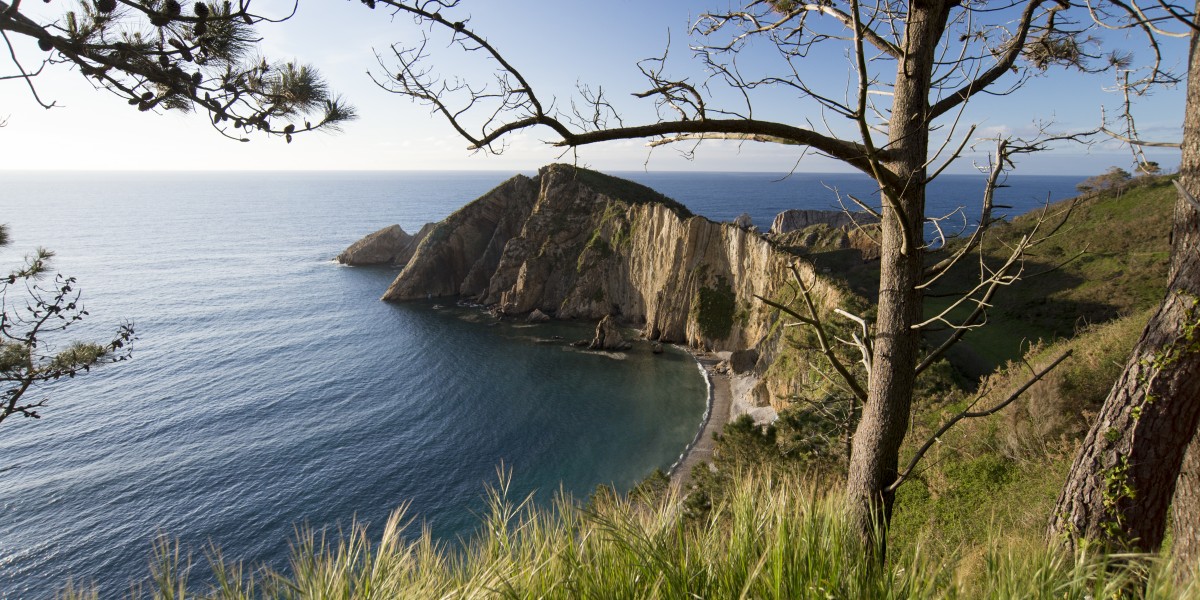
If you’re after hidden‑gem beaches in Spain worth the effort, picture protected coves with capped numbers, scant services and fragile dunes. These sandy stretches are often reached via steep footpaths, boardwalks or limited ferries with permits.
Hidden‑gem beaches in Spain and how to reach them
Explore six quieter corners around the coasts that reward a bit of effort with proper wow moments.
Playa de Bolonia, Cádiz
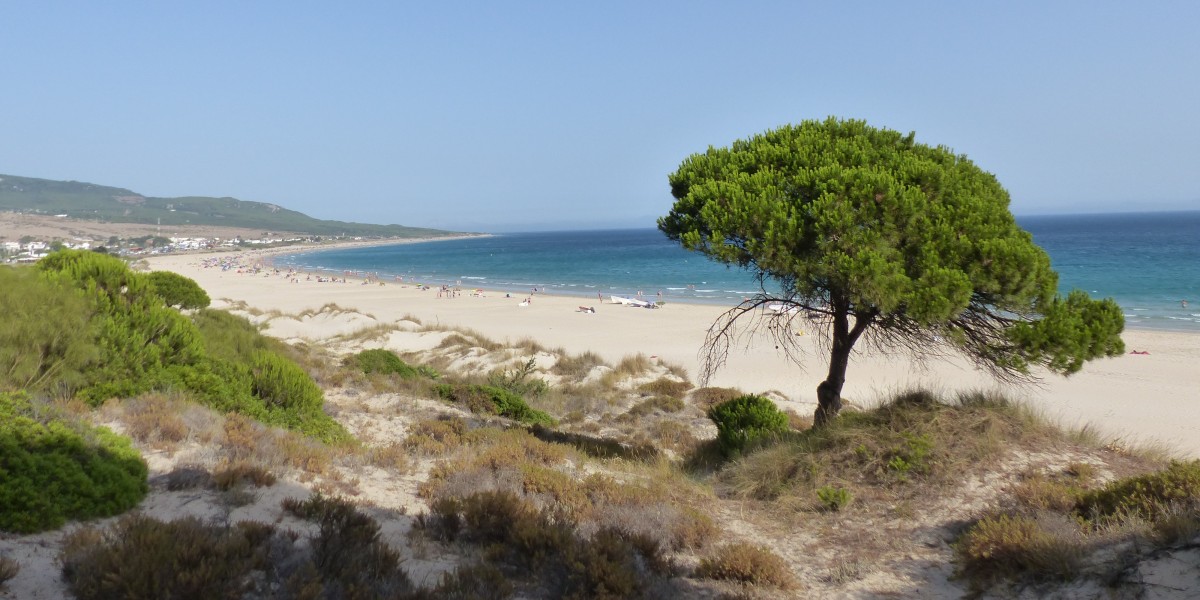
Bolonia Beach feels wild even on busy days. A sweep of pale sand, a towering dune that rolls into umbrella pines, and the Roman city of Baelo Claudia sitting almost on the shore. On calm days, the water is clear and gentle, but when the Levante blows, it’s sand‑whipping and dramatic. You'll see kites dancing down by Tarifa and local fishermen using the ancient almadraba technique to catch tuna when it's in season.
Services and lifeguards are seasonal. The Blue-Flag waving sandy strip of Andalusia, Zahara de los Atunes, and Tarifa’s old town make relaxed bases with good food and low‑key nightlife. Easiest to get here by car via the N‑340, signed turn‑off for Bolonia. Limited buses run from Tarifa in summer, so check timetables in advance.
Playa de Rodas (Islas Cíes), Galicia
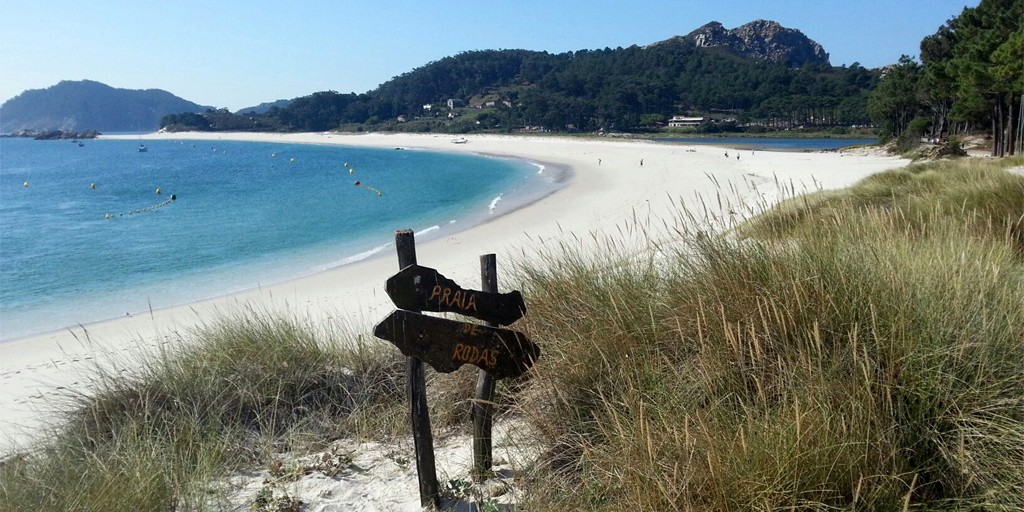
A crescent of white sand linking two forested islets, with shallow, aquamarine water on the lagoon side and the Atlantic crashing on the outer shore. The Cíes are part of the Illas Atlánticas National Park, so numbers are capped and the vibe is hushed, with pine shade and seabirds overhead. Water is crystal but chilly even in August, which keeps swims bracing.
Day visitors need a park authorisation tied to a ferry ticket from Vigo or Cangas in peak months. Cafés and toilets sit near the pier, and beyond that, it's just trails and viewpoints. The only stay on the islands is the campground in season, or base yourself in one of the main towns on the mainland. Book the ferry ahead for July–September and carry layers as wind shifts quickly.
Playa del Silencio, Asturias
A natural amphitheatre of cliffs and sea stacks, with a pewter‑blue Atlantic and a strand of rounded pebbles that click underfoot. It’s tranquil when the swell eases, moody and theatrical when it doesn’t. There are no bars, no umbrellas, just the sound of the ocean and gulls.
A narrow, steep path drops to the shore, and parking is limited on rural lanes near Castañeras. Swims are best on calm days due to currents and slippery footing. The picturesque Asturian coastal towns of Cudillero and Luarca work well as bases for food, harbour strolls and supplies. By car, take the A‑8, exit towards Cudillero, then local roads signed for Playa del Silencio. Public transport is sadly sparse beyond nearby villages.
Cala de En Medio (Cabo de Gata), Almería
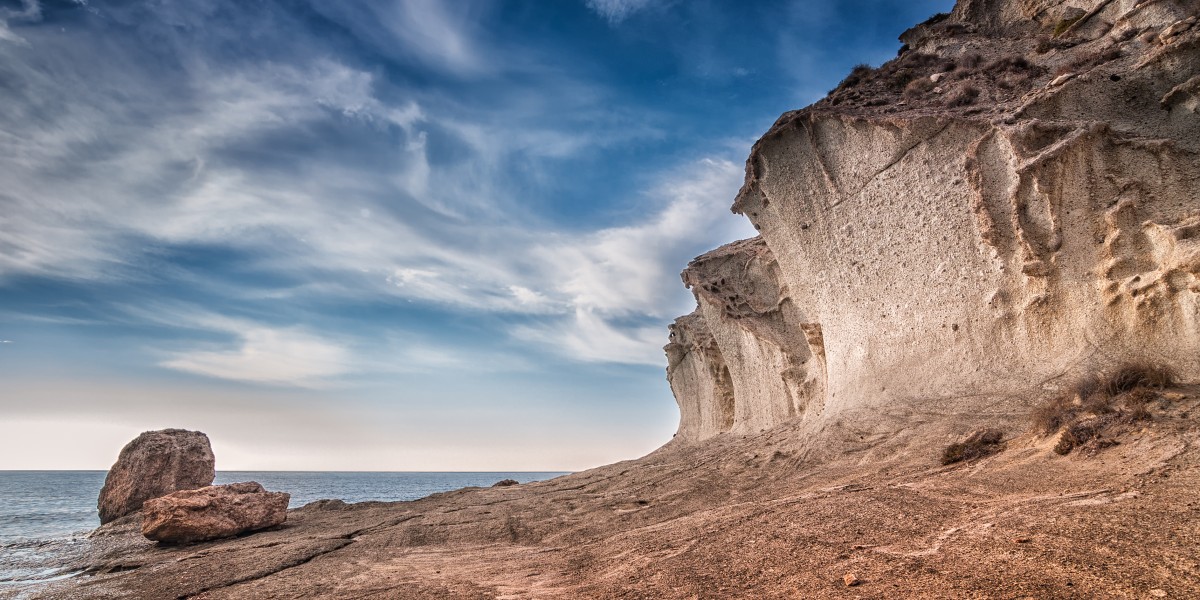
Named the world's most beautiful beach by The New York Times, this small cove with sculpted, creamy volcanic sandstone feels almost lunar. The beach is edged by clear, glassy water over dark rock and sand. Fish flit right by the shore, so a snorkelling mask pays off. Plus, the cliffs cast shade late in the day, though midday is exposed and hot.
Reach En Medio via a rough track from Agua Amarga and a short coastal hike. In peak season, parts of Cabo de Gata National Park limit parking on dirt tracks. No shade structures, no kiosks, no lifeguards, so bring water, a hat and reef‑safe sunscreen. Agua Amarga or one of Almeria's prettiest coastal towns, Las Negras, are the easiest bases for simple seafood spots and supplies. TO get there, drive to Agua Amarga, continue on the signed track towards Cala de En Medio until the small parking area, then walk 20–30 minutes along the path.
Playa de Oyambre, Cantabria
Inside Oyambre Natural Park, this broad bay sits between dunes and green meadows with the Picos de Europa often visible on the horizon. One side opens to mellow surf, while the estuary end is gentler for paddling and long shore walks, with birdlife in the marshes at low tide.
To get there, stick to marked boardwalks to protect the dunes. There are designated car parks, picnic tables set back from the sand, and lifeguards in season on the main area. Comillas and San Vicente de la Barquera are handsome bases with small marinas, seafood taverns and decent bus links. Regional buses run that corridor, but a car gives more flexibility.
Cofete, Fuerteventura
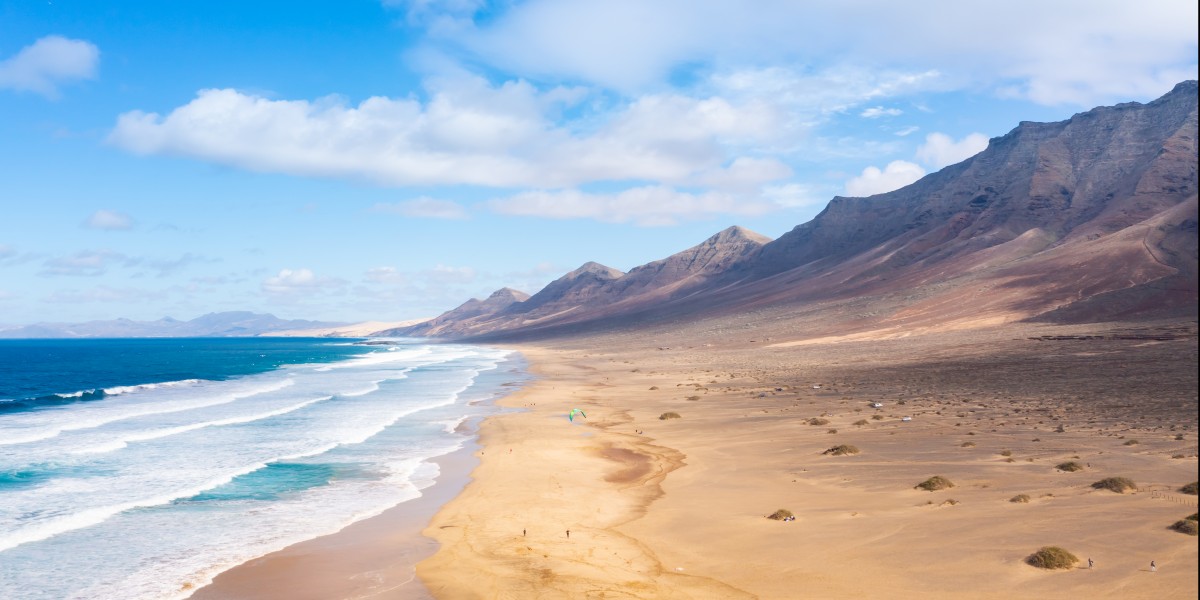
On the far side of the Jandía peninsula, Cofete is a wild, 12‑kilometre stretch of golden sand backed by jagged ridges that catch passing clouds. Undoubtedly one of the best beaches on Fuerteventura, it feels off‑grid, with only the villa and a tiny hamlet reminding you that people live out here. The Atlantic is powerful and the wind constant, so it’s a place to walk, breathe, and take in scale.
The track from Morro Jable is long and rough. A 4x4 helps, and there’s also a limited 4WD public bus service from town. There are no services on the beach, so bring supplies and leave no trace. Swimming is often unsafe due to strong currents, so stick to the shallows if conditions allow. Base in Morro Jable for groceries and calmer beaches when you want an easy dip. Follow signs for Puerto de la Cruz/Cofete beyond Morro Jable.
Cala Fornells, Mallorca
Tucked below terracotta and stone hillside homes in Calvià, the secret cove of Cala Fornells has a small patch of sand, pine shade and water so clear you can count the fish over the seagrass. Locals sprawl on smooth rock ledges, dipping in for snorkels between sunbathing and a lazy lunch at the headland restaurants.
There's limited on‑street parking in the residential lanes so arrive early or come by TIB bus to Peguera, then walk 10–15 minutes around the headland. Base in Peguera for easy eateries and supplies, or hop to nearby coves like Caló de ses Llises for a quieter dip.
Gulpiyuri Beach, Asturias

A pocket of pale sand set inland behind meadows, Gulpiyuri is a quirky little sinkhole beach fed by the Cantabrian Sea through underground caves. Said to be the smallest beach in the world, the water pools a glassy, emerald‑green on calm days. At higher tides, the cove all but disappears, so timing matters. No bars, no loungers, just living geology and the soundtrack of the Atlantic filtered through limestone.
Park near Naves and walk 10–15 minutes along signed footpaths. Aim for mid‑tide to have both sand and swim depth, and go early in July–August. Base yourself in Llanes or Ribadesella for cosy harbours and hearty seafood.
------------
Stay informed on visiting and living in Spain with our weekly newsletter, delivering the latest travel, legal, and lifestyle news.
